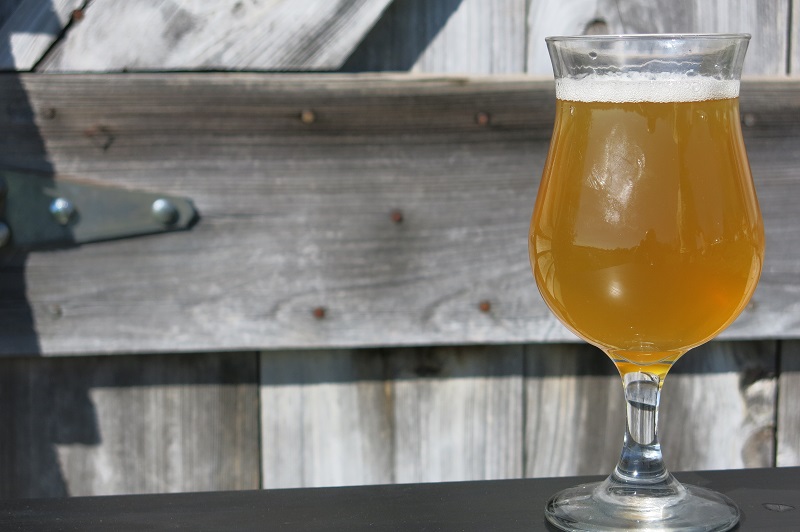Quirks of Brewing: Kettle Souring

(Photo by Daniel Hartis)
The islands of wild and sour ales are, like Borneo or Madagascar, exotic and remote. For most drinkers, they exist on the periphery, little worlds that can be safely enough ignored. For those who delight in a buffet of entirely different and interesting flavors from most beers, though, they are worth a small expedition. But when you set sail, it’s important to recognize that this “sour” category includes a lot of different beers, and they can be made in very different ways. Wild ales (which aren’t always sour) are often made over the course of months or years, as wild microbes leisurely snack on beer’s sugar. But there’s another group that are made with quick-acting bacteria that deliver a distinctive, citric sour to beers like Berliner weisse and gose. This latter group is worth taking a closer look at, because it is growing, and the technique behind these beers is being used to fuel a new generation of tart ales.
The bacteria in question is Lactobacillus, and it can acidify a wort to eye-watering pH in the course of a weekend—no years of barrel-aging required. Of course, there’s a trade-off. Lactobacillus do not create layers of flavor and aroma the way wild yeast or mixed cultures do; you get a single bright note like the kind a soprano uses to shatter glass. Beers that lead with that kind of acidity have been around for centuries, and the methods for producing them are varied. Berliner weisse has perhaps the most august lineage, and these beers date back at least 400 years. Goses may be a contemporary or could even have been around in the 1300s (the historical record is somewhat murky.)
Over the course of those long centuries, brewers managed to coax Lactobacillus into action through a variety of techniques. Wheat is coated in Lactobacillus, so brewers could spark a lactic fermentation merely by letting the mash sit four hours at a warm temperature (a process known as sour mashing). Brewers sometimes pitched grain into wort, hoping for the same result. And of course, in recent decades, they have been able to pitch pure cultures of Lactobacillus. Modern breweries have even, to very poor effect, pitched laboratory-grade lactic acid straight in their beers. (Natural lactic fermentation of wort produces a far more harmonious and less “chemical” flavor.) The less said about this, the better.
Today, the most common technique is known as “kettle souring.” It involves pitching a live culture of bacteria, but with a slightly different goal in mind. In the past, a brewery might have used Lactobacillus in each particular batch of beer to acidify the wort. A common technique would be pitching Lactobacillus along with a regular ale yeast to conduct simultaneous lactic and alcoholic fermentations. But in recent years, breweries have learned that it’s easier to acidify a wort separately, purify it by boiling, and then use it almost as a flavoring in tart beers.
The way it works is ingenious. A brewer conducts a lactic fermentation on a whole batch of wort. Lactobacillus likes very warm, consistent temperatures, so breweries do this in their brew kettles (hence the name), often over the weekend when the vessel is free, anyway. The lactic fermentation produces a very acidic mash with none of the funky flavors a sour mash might produce, and the brewers can then boil it right there in the kettle to purify it. At that point, the brewer has a wort of a stable and predictable pH that she can use to acidify another beer to the level she desires. A portion of the acidified wort is then blended with fresh wort to the desired pH and pitched with regular yeast, where both acidified and fresh worts go through a standard alcohol fermentation.
It’s a great technique because it’s simple, doesn’t mess up the brewing schedule, and allows brewers to get exactly the level of acidity they want. When you look out over the landscape, you see the fingerprints of kettle-souring on a lot of different beers. It accounts for the recent wild popularity of gose, but is also used to inflect beers like saison and witbier with just a kiss of acid. And most interestingly, it has given brewers a tool to experiment with acid to make interesting fruit, vegetable, and even hoppy beers more interesting.
There have been some critiques of this method by people who feel it creates a “cheap sour.” But that mistakes both the function and intention of the technique. It’s just another tool brewers have at their disposal to add flavor to beer (and is a version of a technique that has been used for centuries). The next time you’re slurping down a hibiscus gose or dry-hopped sour, you’ll understand just how tasty that tool can be.
__________________
For more “quirks of brewing” posts, have a look at parti-gyle brewing, ferulic acid rests, decoction mashing, and Belgian warm rooms.
Jeff Alworth is the author of the book, The Beer Bible (Workman, 2015). Follow him on Twitter or find him at his blog, Beervana.

This is a great way to make a Berliner Weisse without having to worry about Lactoing up your fermentation system. Great Lakes started doing this a year ago and the results are fantastic, but it’s pub only since the production kettle can’t be idled that long.
MORE BERLINER WEISSE is a good thing!
Amen, Mike.
In regard to the acidified wort, once a brewery uses part of it in a new beer, do they store the rest for future use? And if it’s stored, how long can it last?
I came across your article in the course of researching for a blog post about my brewery’s new gose. I immediately noticed your use of feminine pronouns to refer to brewers, and I’m incredible impressed and grateful. As a female in the craft industry, seeing myself represented is refreshing. Thanks again!